
If you’re like me, you find that plants come in and out of favor all the time. A few years ago, I was all over blue grama grass (Bouteloua gracilis, Zones 4–9), but now it’s like, blue grama who? Then there are those plants that never lose their appeal. Painted fern, from the genus Athyrium, is one of those for me. I never tire of seeing it in gardens; in fact, my appreciation seems boundless. In my garden, sporelings are pretty common, and I covet every one of them, especially the intrepid ones that find their way into crannies and other unexpected places. It’s not just the forms and colors but their dependability and versatility that are strengths of this fairly modest plant. When the Chicago Botanic Garden trial started, I was a novice where another group of Athyrium was concerned—the lady ferns. However, it took me about a minute to realize their charms; the few cultivars that we sampled only whet my appetite for more.
| AT A GLANCE |Athyrium spp. and cvs. |
Painted ferns and lady ferns stand on their leafy merits alone, having no flowers to overshadow the feathery fronds. The lushly verdant lady ferns, however, are in marked contrast to the sage green, silver, red, and burgundy tones of the vibrant painted ferns. The delicateness of lady ferns’ fronds belies their stoutness. They are durable and hardy garden plants that can be cultivated throughout North America. My first impression of the painted and lady fern cultivars was that their distinguishing traits were perhaps too subtle. While that may hold true when viewed separately of each other, when grown together the cultivars were more distinct than expected. I admit that I was primed to like any and all of them, but there were definitely superior selections in the mix.
Top performers

In all honesty, sticking with the species and foregoing the cultivars can be just as rewarding in the case of Japanese painted fern (A. niponicum var. pictum). The plants we trialed varied in their foliage colors but were especially colorful compared to most of the cultivars. Young fronds were deep red with silvery green tips, eventually lightening to silvery green with hints of red in the veins and along the rachis. Morning sunlight made the colors pop, but too much sun led to heat stress, especially in droughty periods. Since new fronds are produced all season, stressed plants revive when moisture is plentiful again. If you’re OK with a color range rather than a consistent color, then give it a try—after all, it was the Perennial Plant Association’s 2004 Perennial Plant of the Year for a reason.
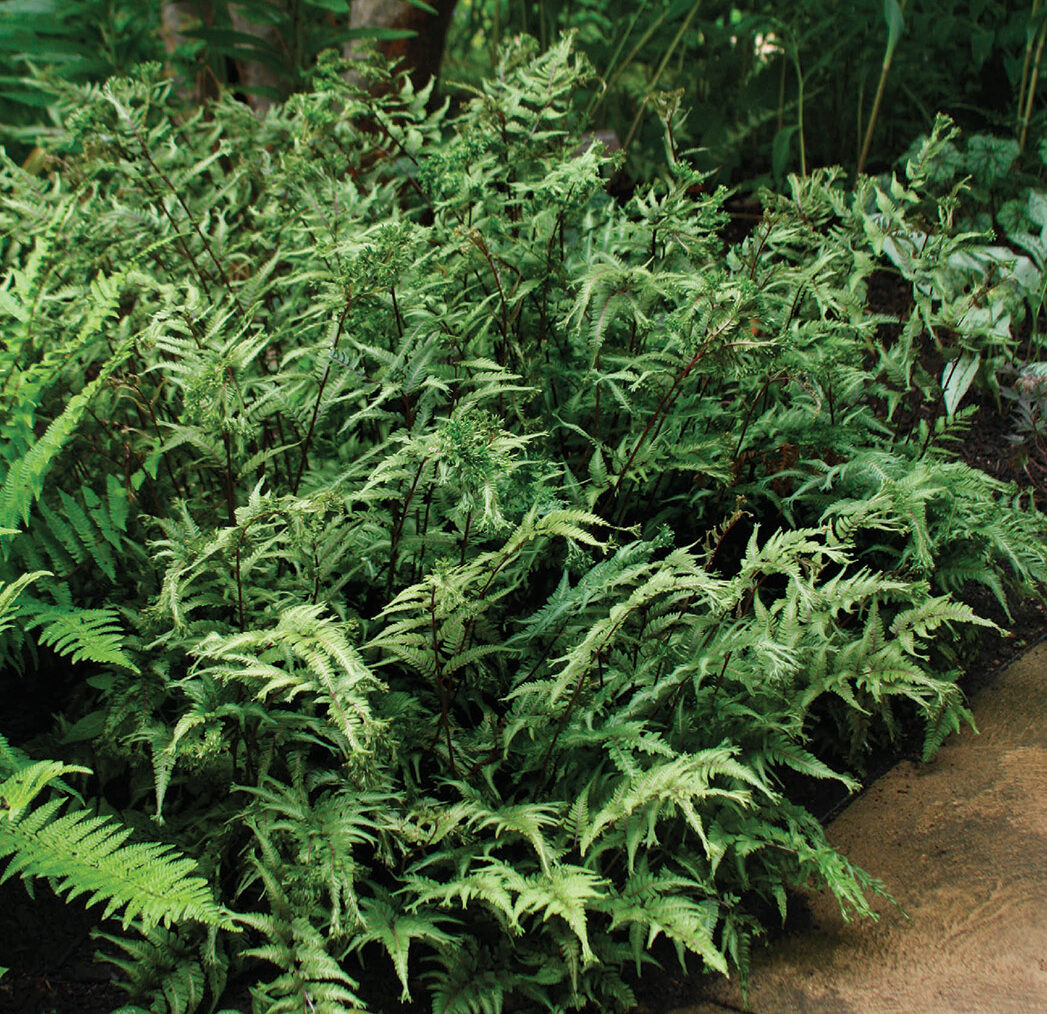
While the silvery sage green and purple coloring of ‘Apple Court’ Japanese painted fern (A. niponicum var. pictum ‘Apple Court’) is much like other cultivars, its look is frothier because of the forked and tasseled frond tips. All that tasseling or cresting means there’s just more leaf than with the typical variety, which gives ‘Apple Court’ a somewhat fuller and fluffier habit. The fronds stood up straighter and taller than those of most cultivars, too, making it one of the largest in the trial at 24 inches tall and 36 inches wide.

Common lady fern (A. filix-femina) bears a passing resemblance to Japanese painted fern, but its long-arching fronds and clumping habit give it a decidedly formal profile. The feathery bright green fronds and graceful form—reminiscent of a shuttlecock—may give the wrong impression that it’s too delicate for the average garden. Although lady fern was occasionally stressed by heat and drought in midsummer, it showed good heat resistance during an especially hot, dry period in 2007. Lady fern is regularly touted as drought tolerant, although I wouldn’t push that too far—it prefers moist, shady locations protected from wind and sun. A plethora of cultivars are available to gardeners; many of the oldest forms originated in Victorian England.

The young fronds of ‘Pewter Lace’ Japanese painted fern (A. niponicum var. pictum ‘Pewter Lace’) are exquisite—dark burgundy accented with silvery green tips. ‘Burgundy Lace’ was a close color match in spring, and both cultivars matured to silver-green with a swath of purple down the middle of the fronds. While both were beautiful, ‘Pewter Lace’ was unaffected by drought stress and leaf scorch under the same conditions as ‘Burgundy Lace’. The purple metallic color and lacy texture of ‘Pewter Lace’ mingles sublimely with black-purple-leaved coral bells (Heuchera spp. and cvs., Zones 4–9) such as ‘Obsidian’ or ‘Black Pearl’ and the larger leaves of brunnera (Brunnera macrophylla cvs., Zones 4–9) or rodgersia (Rodgersia spp. and cvs., Zones 4–9, pictured). Its habit—like that of all Japanese painted ferns—is a pleasingly haphazard arrangement of arched and twisted fronds that can reach 18 inches tall and 30 inches wide.
How to speak fern
While common botanical terms can be used to describe the feathery foliage of ferns, there does exist an entire world of specialized fern terminology. Familiarity with these terms can help in deciphering catalog descriptions and will make you sound like an expert when garden visitors ask questions.

‘Branford Beauty’ (A. ‘Branford Beauty’)—one of three outstanding painted-fern hybrids we trialed—has an upright clumping habit that is full-on lady fern, while the colorful fronds arch and curve like Japanese painted fern. ‘Branford Beauty’ was more uniformly silver-green than other cultivars; early purple highlights faded quickly, and the aging leaves were of a slightly darker green along the purple rachis. ‘Ghost’ similarly mirrors the lady fern with distinctly upright fronds and a strongly vase-shaped habit, but its silvery green fronds—brightest in spring—are lighter than ‘Branford Beauty’. Although both are lovely, ‘Branford Beauty’ wasn’t as slow as ‘Ghost’ to emerge in the spring and therefore had the advantage in my eyes.
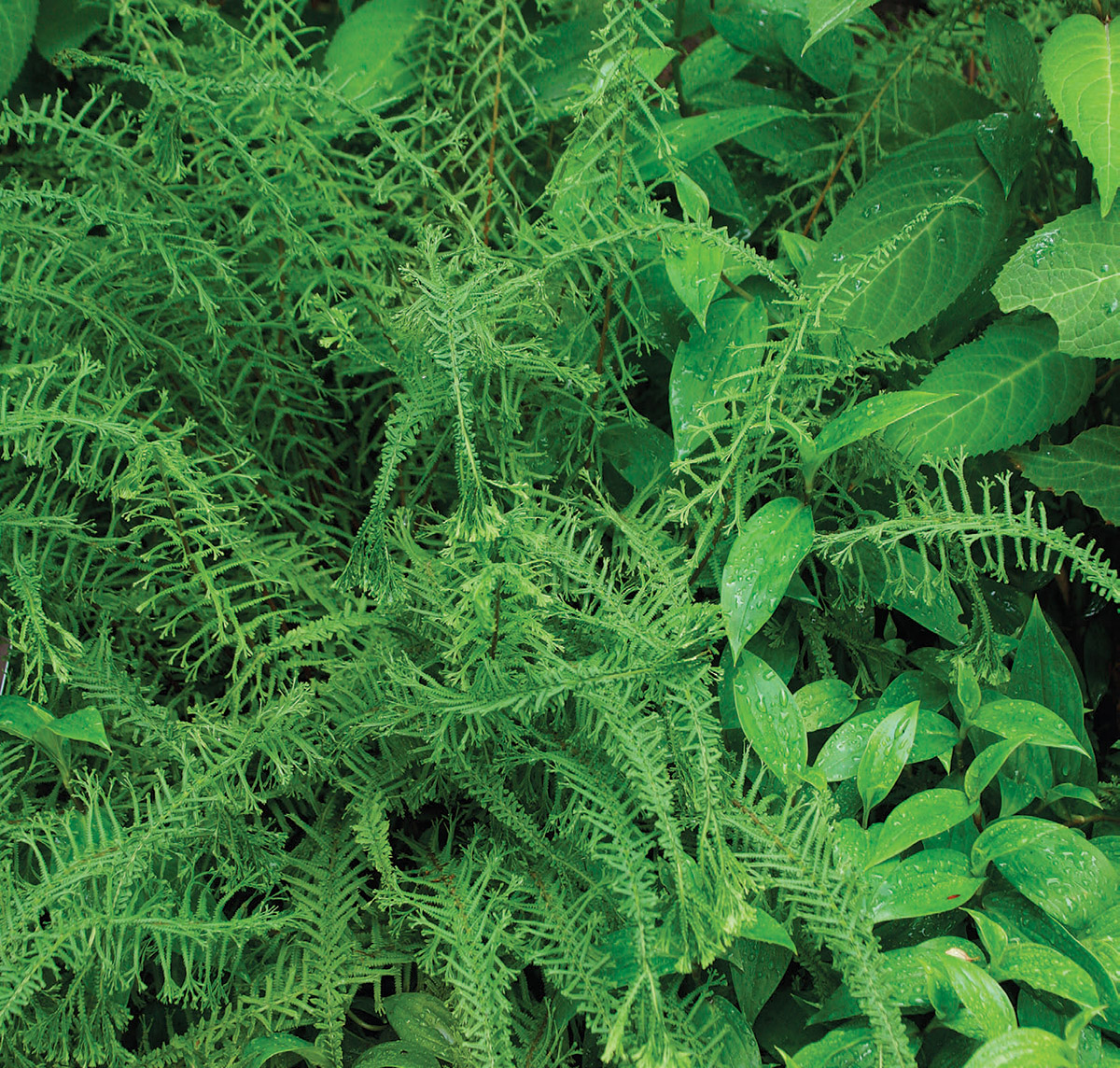
‘Victoriae’ (A. filix-femina ‘Victoriae’), a classic Victorian-era lady fern, features crisscrossing slender green pinnae that form distinctive X’s along the rachis and nodding, fan-shaped tips. There’s both a playfulness and a Victorian fussiness to the finely divided fronds. This cultivar’s robust, vase-shaped habit with upright arching stems was a consistent favorite in the trial. Its affinity to ‘Dre’s Dagger’—purportedly a dwarf sport of ‘Victoriae’—was indisputable, although the pinnae of ‘Dre’s Dagger’ were narrower. Were it not for some winter crown damage, ‘Dre’s Dagger’ would have gotten four stars, too.

‘Encourage’ (A. filix-femina ‘Encourage’), one of the very best lady ferns in the trial, is a modern selection of the old-timey crested form ‘Vernoniae Cristatum’. The light green fronds are tasseled at the tips, looking like a chorus line of frilly petticoats. Slow to develop the first summer, ‘Encourage’ had a robust vase-shaped habit by the second year and was particularly full and robust by the fourth year. The plants were in full sun by midafternoon, so some leaf scorching was observed occasionally in July and August.
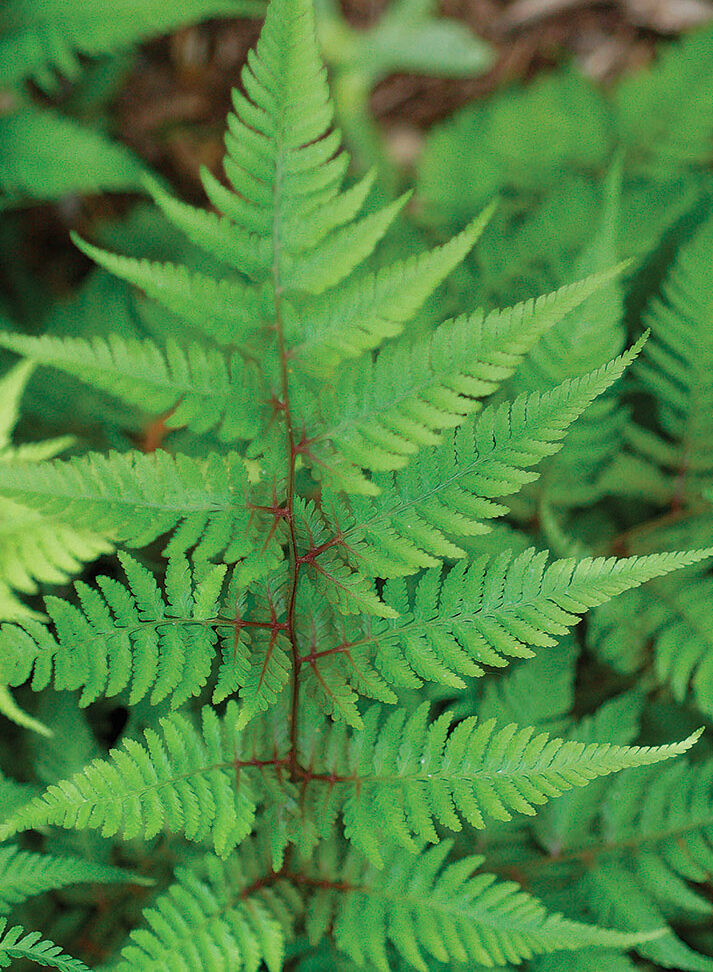
‘Branford Rambler’ (A. ‘Branford Rambler’) is essentially a green-leaved version of Japanese painted fern, and I found it surprisingly refreshing in a sea of silvery curves. Its coloring comes from the lady fern; the bright green fronds lack any silver, but they hold a bit of purple in the rachis and veins. For several years, ‘Branford Rambler’ seemed like it was a clumper, but eventually it began gamboling about like other spreaders, reaching over 40 inches wide. Although it was periodically affected by drought, ‘Branford Rambler’ was notably the best looking fern in late August 2010 after a period of seriously dry weather.
Newer varieties to obsess over
Unlike with other Japanese painted ferns, the luminous light green fronds of ‘Pearly White’ (A. niponicum var. pictum ‘Pearly White’) feature a central swath of ivory without any purple highlights. Otherwise, this cultivar is just as dependable and easy to grow, but filtered shade is best to protect the pale leaves from scorching sunlight. To my eyes, pairing the frosty fronds with white-flowered false hydrangea (Deinanthe bifida, Zones 4–8) might be both textural and monochromatic perfection. Both like a moist, shady garden, and the juxtaposition of lacy fronds and broad, cleft leaves is clever. ‘Pearly White’ grows to about 12 inches tall and 24 inches wide.
While you might not know what exactly to expect with a name like ‘Godzilla’ (A. ‘Godzilla’), you know that it won’t be meek. In form and color, ‘Godzilla’ looks familiar—arching silvery green fronds with green highlights and dark purple rachises. But in size, it’s almost a monster. With the potential to reach 3 feet tall and 6 feet wide, it stands well above and outdistances the average painted fern. ‘Godzilla’ was discovered by Tony Avent at Plant Delights Nursery, so you can be assured it’s not run of the mill.
Truth be told, I had ‘Lemon Cream’ painted fern (A. niponicum ‘Lemon Cream’) briefly a few years ago but had to let it go when I lost my shade garden. Though I was intrigued by the idea of lacy green fronds speckled with lemon-cream spots, I wasn’t sure if it would be fun or look like the pox! Morning sun enhances this fern’s unique coloring, which becomes more prominent later in the season. ‘Lemon Cream’ has the irregular habit of a Japanese painted fern but only gets to 8 inches tall and 30 inches wide. ‘Lemon Cream’ comes from Asia, where variegation rules. Availability may still be limited, but it’s worth the search.
|
|
‘Joy Ride’ (A. niponicum ‘Joy Ride’) is another recent painted-fern introduction from Plant Delights Nursery. The green fronds feature a silvery central zone and frilly crested tips. I can’t describe the ruffled foliage better than Tony Avent, so why try? “It has more petticoats than you’d see at a RuPaul review.” It’s expected to be 20 inches tall and 36 inches wide, but I have a feeling it’ll look much more substantial.
Trial results
| PARAMETERS |Since 2002, the Chicago Botanic Garden has evaluated 26 painted ferns and lady ferns in our comparative trials. How long: 4 years Zone: 5b Conditions: Well-drained, alkaline, clay-loam soil. The naturally shaded site initially received either no sunlight or varying levels of filtered sunlight throughout the day. The loss of a large tree in 2006 exposed a portion of the site to full sun in mid to late afternoon. Except in periods of drought, the ferns were generally adaptable to the increased light exposure. Care: We provided minimal care, allowing plants to thrive or fail under natural conditions. Besides observing their ornamental traits, we monitored how well they grew and adapted to the environmental and soil conditions while keeping a close eye on any disease or pest problems and assessing plant injury over winter. |
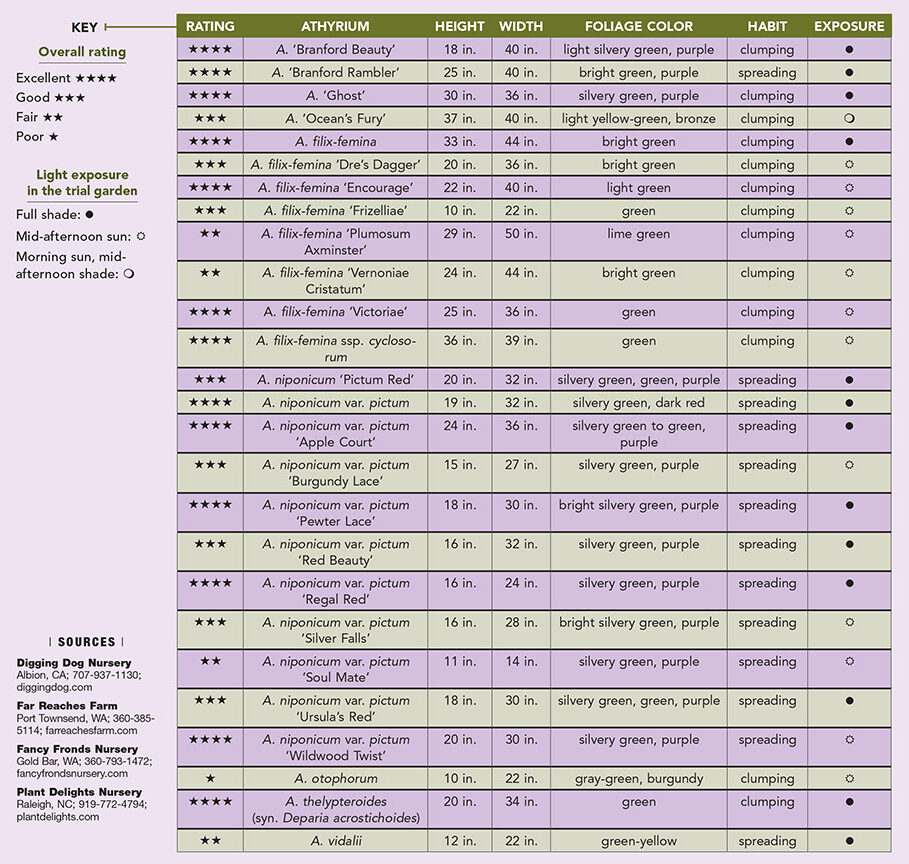
Important Fern Facts
Siting
Painted ferns and lady ferns are generally easy to grow, but proper siting is essential. They prefer moist, well-drained soils in partial to full shade but can tolerate some sun. Morning sunlight enhances the leaf color of painted ferns.
Moisture

Consistent moisture is essential to keep ferns healthy and lush; even so, fronds may look tattered by summer’s end. Heavy rainfall or irrigation can beat down painted ferns, but fronds pop back in a day or two unless they were broken (the stipes and rachises are brittle).
Pests
Deer rarely touch these ferns, but occasional rabbit browsing can be a problem.
Maintenance
End-of-season cleanup is a breeze. Simply rake or cut away dried fronds in late fall or early spring.
Propagation
Spring division or tissue-culture is necessary to propagate cultivars.
Spores
Fern spores (brown dustlike specks on the back of fronds) will germinate readily in the garden. The seedlings, called sporelings, will not come true to the parent.
Richard Hawke is plant evaluation manager for the Chicago Botanic Garden in Glencoe, Illinois.
Sources:
- Digging Dog Nursery Albion, CA; 707-937-1130; diggingdog.com
- Far Reaches Farm Port Townsend, WA; 360-385- 5114; farreachesfarm.com
- Fancy Fronds Nursery Gold Bar, WA; 360-793-1472; fancyfrondsnursery.com
- Plant Delights Nursery Raleigh, NC; 919-772-4794; plantdelights.com
Fine Gardening Recommended Products
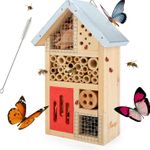
Niteangel Natural Wooden Insect Hotel, Garden Insect House for Ladybugs, lacewings, Butterfly, Bee, Bug
Fine Gardening receives a commission for items purchased through links on this site, including Amazon Associates and other affiliate advertising programs.

Spear & Jackson 4930FZ Razorsharp Telescopic Tree Pruner
Fine Gardening receives a commission for items purchased through links on this site, including Amazon Associates and other affiliate advertising programs.
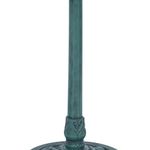
Alpine Corporation 28" Tall Outdoor Birdbath with Scrollwork Decoration Yard Statue
Fine Gardening receives a commission for items purchased through links on this site, including Amazon Associates and other affiliate advertising programs.












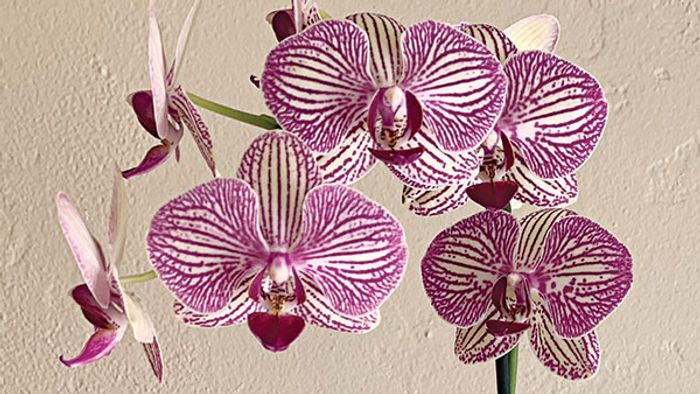












Comments
Great job!
Log in or create an account to post a comment.
Sign up Log in